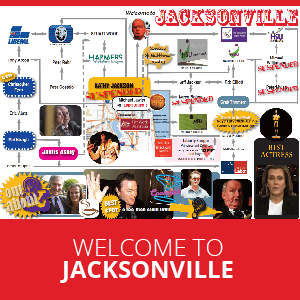Your website could be driving potential customers straight to your competitors. Every day, local businesses lose sales because their websites fail to meet basic user expectations.
These failures happen quietly, without warning and often without the business owner even realising what went wrong.
Most website mistakes are fixable. Understanding these common pitfalls helps you transform your online presence into a powerful sales tool.
1. Missing or incorrect contact information
Many local business websites bury contact details in obscure menu locations or present outdated phone numbers and addresses.
Your contact information should appear on every page, typically in the header or footer. Include your phone number, physical address, email and business hours. Make phone numbers clickable for mobile users.
Google penalises businesses with inconsistent contact information. Ensure your website matches your Google Business Profile and directory listings exactly.
2. Poor mobile responsiveness
Mobile devices generate more than half of all web traffic today. Yet countless local business websites still deliver frustrating mobile experiences with tiny text and awkward navigation. Mobile responsiveness affects both user experience and search engine rankings.
If you feel that your business needs help with this problem, PWD, a web design company, can ensure your website adapts seamlessly to all screen sizes.
3. Slow loading speeds
Website visitors expect pages to load within two seconds. When loading takes longer, most users simply leave. Several factors contribute to slow loading speeds:
- Oversized images that have not been compressed or optimised properly
- Excessive plugins or scripts running in the background unnecessarily
- Poor hosting services that cannot handle traffic demands adequately.
Compress all images before uploading them. Choose a reliable hosting provider and remove unnecessary plugins for faster performance.
4. Weak or missing calls to action

Your website should guide visitors towards specific actions. Many local business websites simply present information without directing users on what to do next. Every page needs a clear, compelling call to action. Use action-oriented language that tells visitors exactly what step to take.
Working with a digital marketing agency can help you craft strategic calls to action that convert browsers into customers. The right messaging combined with smart placement dramatically improves conversion rates.
5. Outdated content and design
An outdated website signals that your business may no longer be operating or does not care about its online presence. Old copyright dates and obsolete design trends damage credibility.
Update your website content regularly. Add new blog posts, update service descriptions and refresh images periodically. Websites older than three years often look dated.
Contemporary websites favour clean layouts and purposeful design choices. Flash animations and autoplaying music belonged to a different era.
6. Lack of local SEO optimisation
Without proper local SEO, your website remains invisible to people actively looking for your services in your area.
Optimise your website for local searches through several strategies:
- Include your city and region names naturally throughout your content.
- Create location-specific pages for each area you serve with unique content.
- Embed a Google Map showing your business location on your contact page.
Schema markup helps search engines understand your business details better. Add local business schema to your website code.
Customer reviews matter enormously for local SEO. Encourage satisfied customers to leave reviews on Google and display testimonials on your website.
7. No clear value proposition
Visitors should understand within seconds what your business offers and why they should choose you over competitors.
Your homepage should immediately answer three questions: What do you do? Who do you serve? Why should someone choose your business?
Place your value proposition prominently above the fold. Use clear, benefit-focused language that speaks to customer needs rather than listing features.
8. Missing or inadequate service information
Vague service descriptions or missing information send potential customers elsewhere to find answers.
Create dedicated pages for each major service you offer. Include detailed descriptions that explain what the service involves and what results customers can expect.
Use clear, jargon-free language that your target audience understands. Explain technical concepts in simple terms.
9. Poor navigation structure
Confusing navigation structures frustrate users and increase bounce rates significantly. Limit your main navigation menu to five to seven items maximum. Too many options overwhelm visitors. Use clear, descriptive labels rather than creative names.
Include a search function if your website contains substantial content. Add breadcrumb navigation to help users understand where they are within your site.
10. Absence of trust signals
Websites lacking trust signals create doubt and hesitation that prevent conversions. Display multiple trust indicators throughout your website.
Essential trust elements include:
- customer testimonials with real names and photos that potential clients can relate to;
- professional associations, certifications and industry awards your business has earned; and
- security badges, SSL certificates and payment protection logos for online transactions.
These elements work together to build credibility. Display privacy policy links prominently, so visitors understand how you protect their data.
Taking action on your website
Fixing these common mistakes transforms your website into a powerful business asset. Start with the issues affecting your site most severely.
Regular website audits help you catch problems before they cost significant business. Schedule quarterly reviews to assess performance and ensure everything functions correctly.
Your website represents your business online every hour of every day. Investing in fixing these fundamental issues pays dividends through increased traffic and higher conversion rates.










